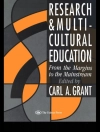Inclusive campus-community collaborations provide critical opportunities to build community capacity—defined as a community’s ability to jointly respond to challenges and opportunities—and sustainability. Through case studies from across all three subregions of Appalachia from Georgia to Pennsylvania, Engaging Appalachia: A Guidebook for Building Capacity and Sustainability offers diverse perspectives and guidance for promoting social change through campus-community relationships from faculty, community members, and student contributors. This volume explores strategies for creating more inclusive and sustainable partnerships through the arts, humanities, social sciences, and natural sciences. In representing diverse areas, environments, and issues, three relatable themes emerge within a practice viewpoint that is scalable to communities beyond Appalachia: fostering student leadership, asset-building, and needs fulfillment within community engagement. Engaging Appalachia presents collaborative approaches to regional community engagement and offers important lessons in place-based methods for achieving sustainable and just development. Written with practicality in mind, this guidebook embraces hard-earned experiences from decades of work in Appalachia and sets forth new models for building community resilience in a changing world.
Mục lục
Introduction , by Rebecca Adkins Fletcher, Rebecca-Eli Long, and William Schumann
1. Saving Appalachian Gardens and Stories : Growing community and sustainability through seeds and art, by Chris Dockery, Karrie Ann Fadroski, and Rosann Kent
2. Bringing Back the Forest : University Outreach, Community Engagement, and Partnerships for the Reforestation of Coal Mines in Appalachia, by Patrick Angel, Christopher Barton, Geoffrey Bell, Theresa Burriss, and Sarah Hall
3. Wealth and Poverty in the Little Cities of Black Diamonds : Navigating Community-University Partnership in Southeast Ohio, by Robert Frank, Diana Marvel, Rachel Terman, and John Winnenberg
4. Collaborating for Conservation : Monitoring the Hemlock Woolly Adelgid in the Allegheny National Forest, by Jonathan Heck, Sarah Johnson, Bethany Kier, and Denise A. Piechnik
5. Documenting the Past to Sustain the Future : Appalachian Teaching Project in Unicoi County, Tennessee, by Rebecca Adkins Fletcher, Johnny Lynch, and Ron R. Roach
6. Roots With Wings : Oral History Project in Floyd County, Virginia, by Mary Dickerson, Barry Hollandsworth, Kathleen Ingoldsby, Angela Myers, Catherine Pauley, and Melinda Bollar Wagner
7. Breaking the Chains of Addiction through University, Nonprofit and Community Partnerships : The Story of Pollen8, by Louis Gaunch and Cheryl Laws
8. Students Leading the Way to Social Change : Engaging Students in Applied Sociological Research in Eastern Kentucky, by Dylan C. Burns, J. Jared Friesen, James N. Maples, Stephanie M. Mc Spirit, Shaunna L. Scott
9. Town and Gown Collaborations in Southwest Virginia Post-Coal Communities : Clinch River Valley Initiative and Radford University Economic Diversification Efforts, by Theresa L. Burriss, Kasey Campbell, and Caroline Leggett
10. GIS Mapping of Legacy Oil and Gas Wells , by Matthew M. Kropf and Devin Weis
11. Appalachia Abroad : Reflections on Long-Term Engagement in Rural Wales, by Geraint Roberts, William Schumann, and Bruce Stewart
Conclusion
Contributors and Editors
Epilogue , by Rebecca Adkins Fletcher, Rebecca-Eli Long, and William Schumann
Index
Giới thiệu về tác giả
William R. Schumann is Professor of Appalachian Studies in the Department of Rural Resilience & Innovation and the former Director of the Center for Appalachian Studies at Appalachian State University. Schumann has 25 years of experience in community development and applied pedagogy in Appalachia, South Africa, and Wales. He has authored or edited four books, including Appalachia Revisited: New Perspectives on Place, Tradition, and Progress.












